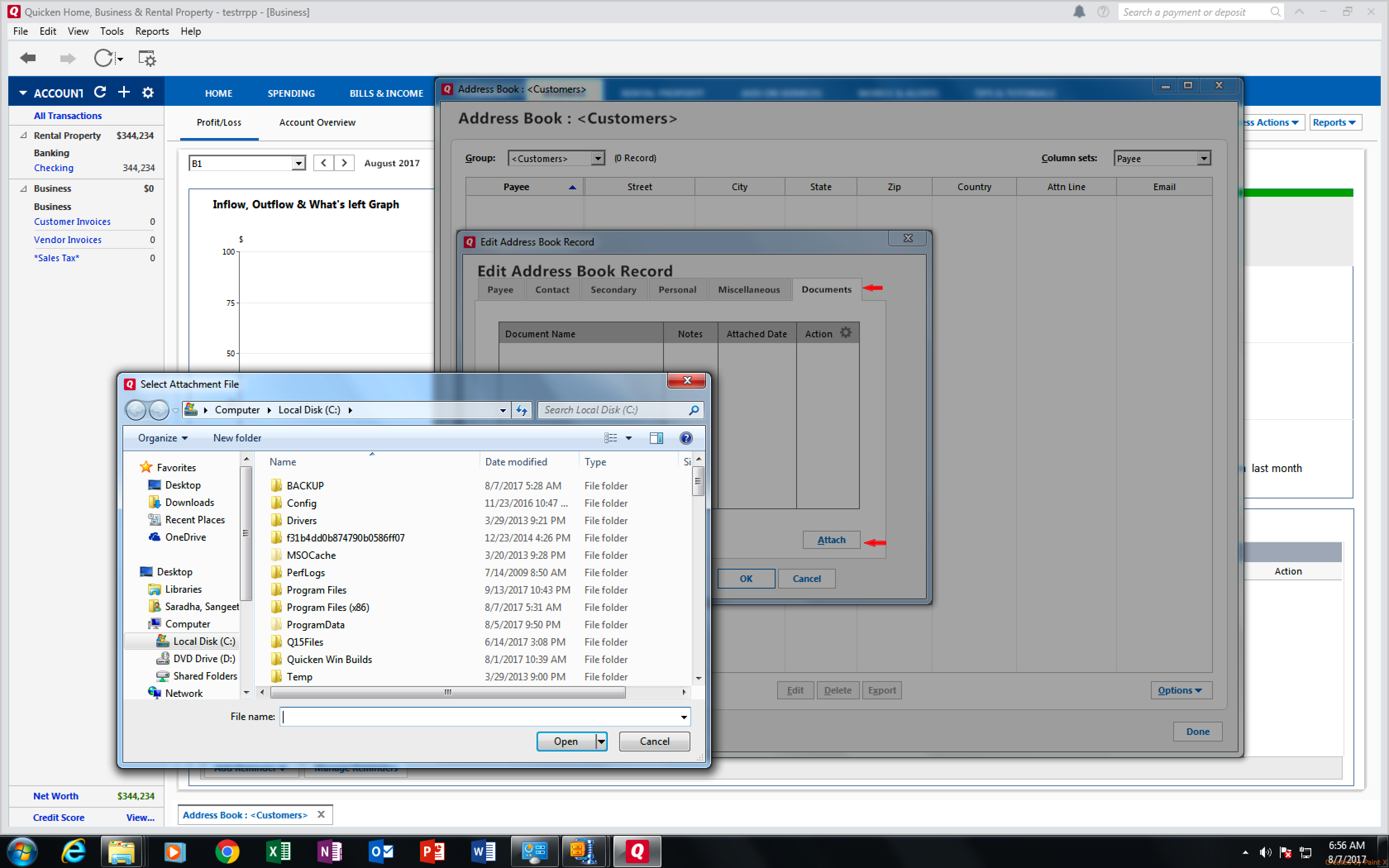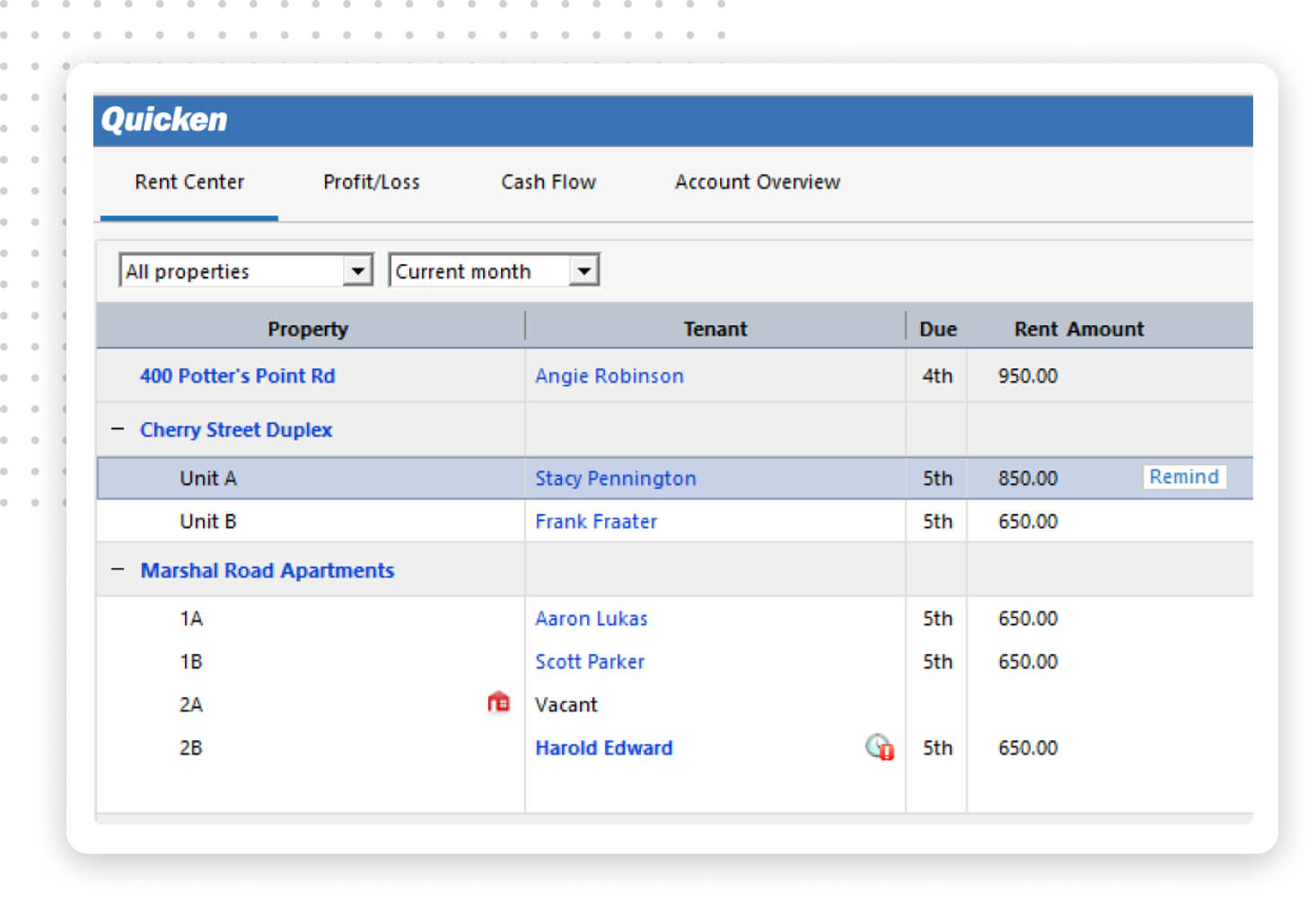

- #Quicken rental property manager 2.0 on windows 7 pdf
- #Quicken rental property manager 2.0 on windows 7 portable
- #Quicken rental property manager 2.0 on windows 7 android
- #Quicken rental property manager 2.0 on windows 7 software

#Quicken rental property manager 2.0 on windows 7 pdf
Mobile apps allow users to quickly upload rental documents from their mobile devices in various formats, including PDF and Microsoft Word. They will also be alerted to any changes, updates, payments made, leftover amounts and much more through app notifications. With real-time sync capabilities, all users can access their complete financial information on the go. The apps enable landlords and tenants to add receipts for various bills or payments, create invoices and track tenant payments with just a swipe or tap on the screen. The use of a mobile app for property management allows for greater flexibility in making changes during financial transactions. Once the sync is complete, all changes will reflect in the web app as well.

An advantage that the sync feature offers is that changes can be tracked in real time on the mobile devices. This backup is set up to counter the negative impact of loss or damage of device. Cloud-based apps not only sync with multiple devices but also create a backup on the cloud. Users can sync their data to the cloud, which allows them to access information from their mobile devices.
#Quicken rental property manager 2.0 on windows 7 software
Here are some key differences between a native mobile app and cloud-based software accessed from a mobile device browser: Cloud-based software, which can be accessed anywhere with internet, can also be viewed on the browsers of compatible mobile devices. Native mobile apps are just one mobile property management solution.
#Quicken rental property manager 2.0 on windows 7 android
Rent Manager’s mobile app, rmService, allows users to create and manage work orders from their Android or iOS device Get alerts about late rent payments, lease agreements that are about to expire, upcoming routine maintenance tasks and more such reminders. List vacancies, photograph units and upload photos and info to popular listing sites.Ĭollect payments and track past transactions. Perform on-site inspections, submit maintenance requests, send work orders and document damages with device camera. Track vacancies in real time and check potential tenants’ rental and credit histories. Some common functions of mobile property management apps are: Property Management Tenants can also use apps to make payments or submit maintenance requests directly from their iPhones (or any mobile device).Īpps usually offer a few key capabilities that are best suited to working on a mobile device while in the field. Property management apps allow users to perform a variety of tasks that might need to be handled remotely: for example, listing a vacancy in real time or accessing property data while on-site. Native mobile apps are software programs designed for a mobile device’s operating system. How Apps Differ From Browser-Based Mobile Solutionsīenefits of Property Management Mobile Apps For that purpose, we’ve created this guide and hope to provide you the necessary insight.Ĭommon Functionality of Property Management Apps Mobile apps not only help track payments but also offer other functionalities, such as management of lease agreements, invoices, expenses, instant financial reports and work orders.įor potential buyers of property management apps, exploring native mobile apps is one way to go. For tenants, it becomes easier to pay rent and submit maintenance requests on the go. These apps allow them to post vacancy ads, track rent payments, check expenses and generate invoices.

#Quicken rental property manager 2.0 on windows 7 portable
Property management mobile apps help owners and landlords work remotely and access data on their portable devices from different locations.


 0 kommentar(er)
0 kommentar(er)
